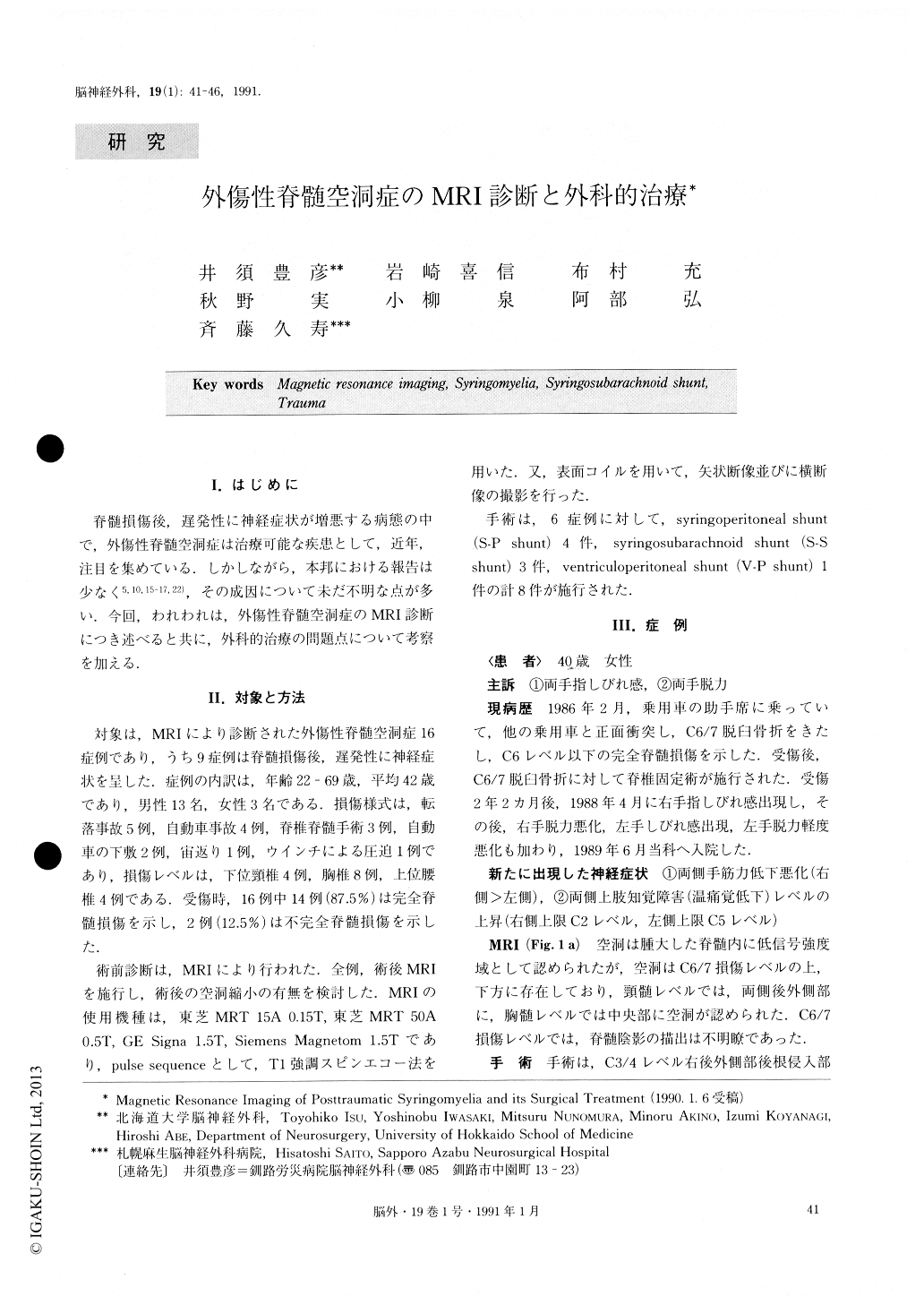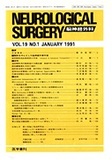Japanese
English
- 有料閲覧
- Abstract 文献概要
- 1ページ目 Look Inside
I.はじめに
脊髄損傷後,遅発性に神経症状が増悪する病態の中で,外傷性脊髄空洞症は治療可能な疾患として,近年,注目を集めている.しかしながら,本邦における報告は少なく5.10,15-17,22),その成因について未だ不明な点が多い.今回,われわれは,外傷性脊髄空洞症のMRI診断につき述べると共に,外科的治療の問題点について考察を加える.
Posttraumatic syringomyelia is an uncommon but sig-nificant late complication of spinal cord injury. It occurs in approximately 1.1-3.2% of cases of spinal in-juries. With the increasing availability of CT and magnetic resonance imaging (MRI) , the incidence of posttraumatic syringomyelia is increasing. The purpose of this report is to show MRI of posttraumatic syringo-myelia and to assess the results of surgical treatment.
Materials and Methods
This series included 16 cases of posttraumatic syringo-myelia studied with MRI. 9 out of 16 cases showed delayed deterioration of neurological symptoms follow-ing spinal injuries. The interval between the trauma and the delayed symptoms of deterioration was from 2 years 2 months to 32 years (mean, 8 years and 5 months) . There were 13 men and 3 women. The ageranged from 22 to 69 years, with a mean age of 42 years. The initial spinal cord injury was located in the lower cervical region in 4 cases, the thoracic region in 8, and the upper lumbar region in 4.
All the patients were studied with a resistive 0.15T system (Toshiba MRT 15 A) or a superconductive 0.5T system (Toshiba MRT 50 A) or a superconduc-tive 1.5T system (GE Signa or Siemens Magnetom) Six patients underwent 8 operative procedures for post-traumatic syringomyelia. Syringoperitoneal shunt was performed in 4 patients, syringosubarachnoid shunt in 3 and ventriculoperitoneal shunt in one.
Results
① MRI
In all cases, the posttraumatic syringomyelia was easily diagnosed by MRI. The syrinx extended super-iorly and/or inferiorly from the area of the old trauma. In 4 out of 16 cases, the syrinx extended into the medulla oblongata. In the cervical cord and the upper thoracic cord, the syrinx was situated in the postero-lateral portion, unilaterally or bilaterally. Below the middle thoracic cord, the syrinx was centrally located.
② Postoperative results
In an average postoperative follow up period of 2 years and 9 months ranging from 7 months to 4 years and 4 months, the neurological symptoms improved in 5 out of 6 patients (83%) . In all 5 cases, the pain or numbness was dramatically relieved. However, in 3 out of 5 cases in whom the duration of the symptoms was more than one year, the ability to perform activities of daily living didn't significantly change after surgery.
Conclusions
Posttramatic syringomyelia should be considered in any patients showing delayed onset or progression of neurological symptoms following spinal injuries. Early diagnosis and surgical treatment are recommended.

Copyright © 1991, Igaku-Shoin Ltd. All rights reserved.


